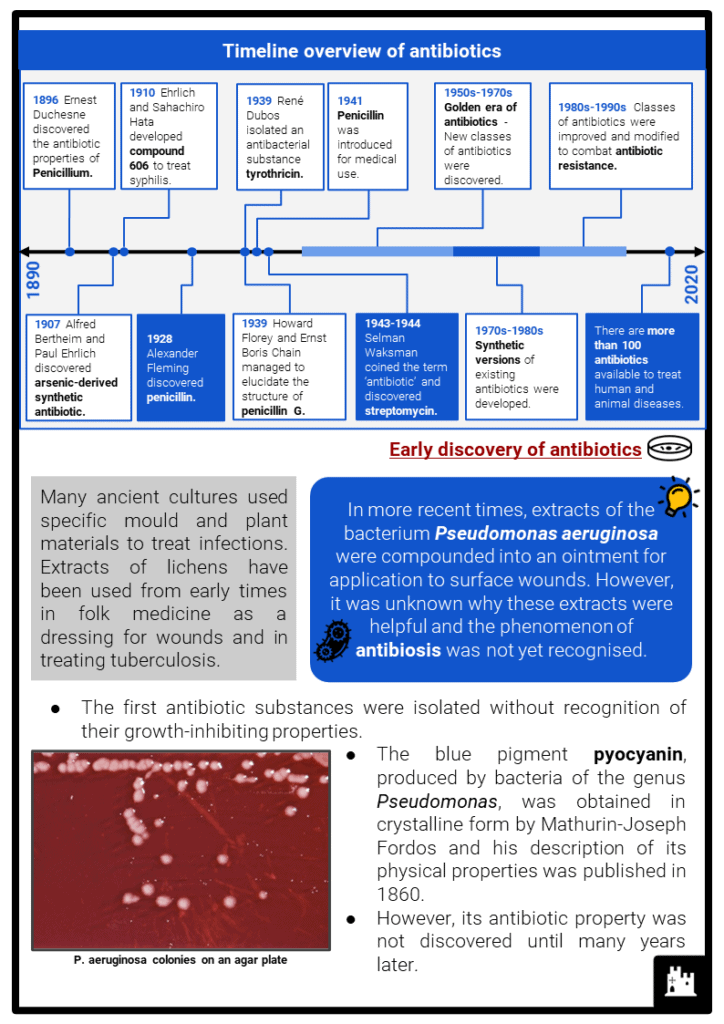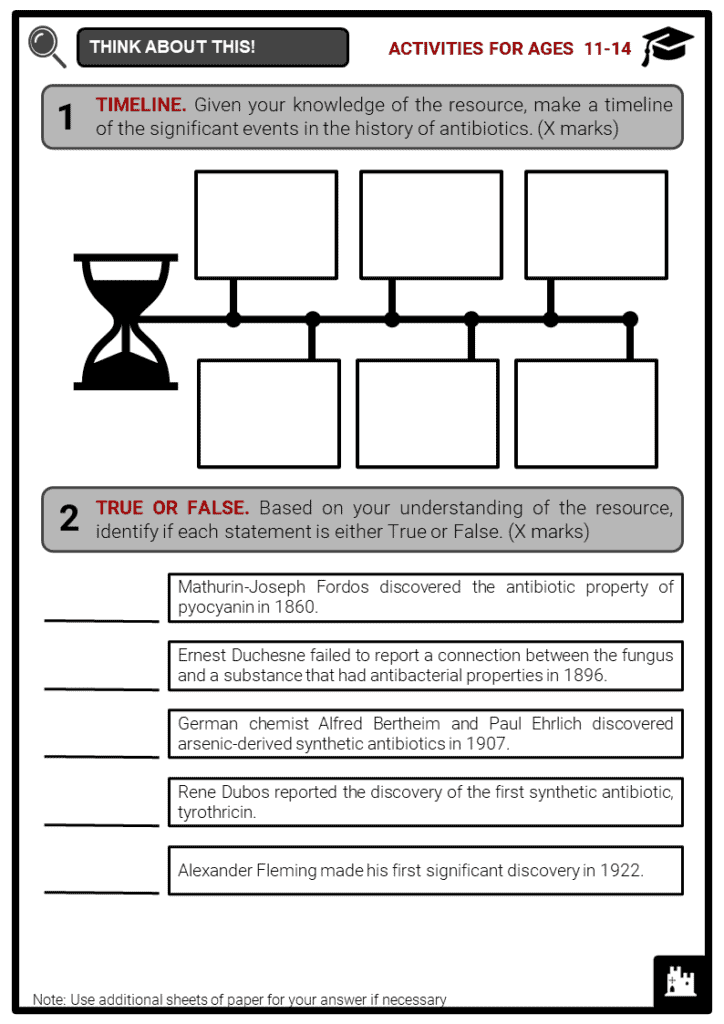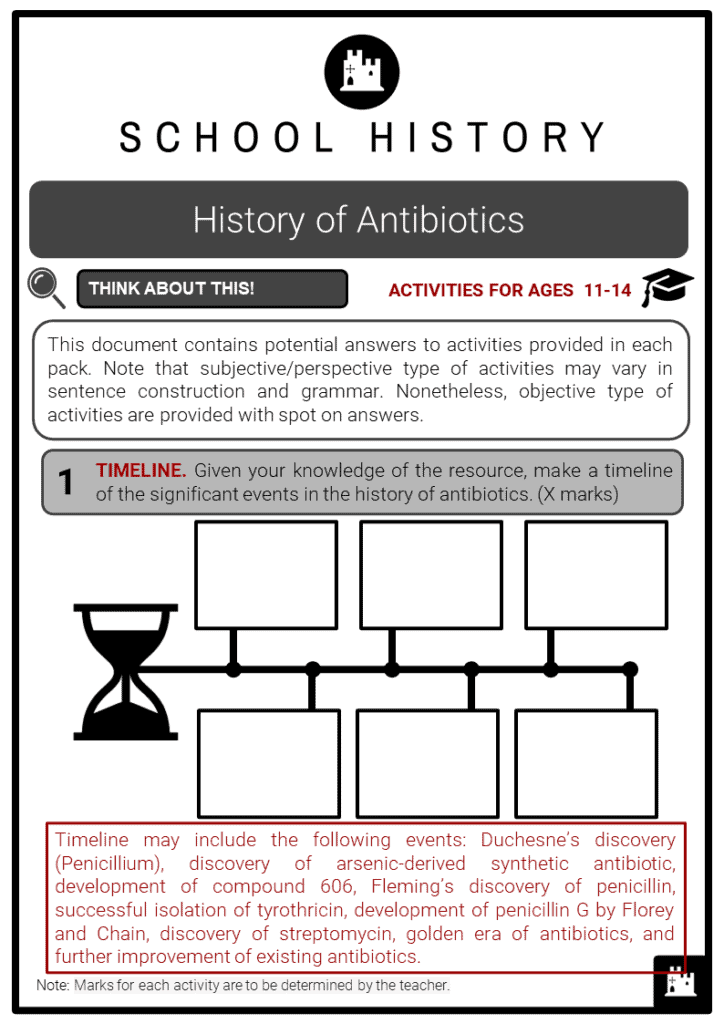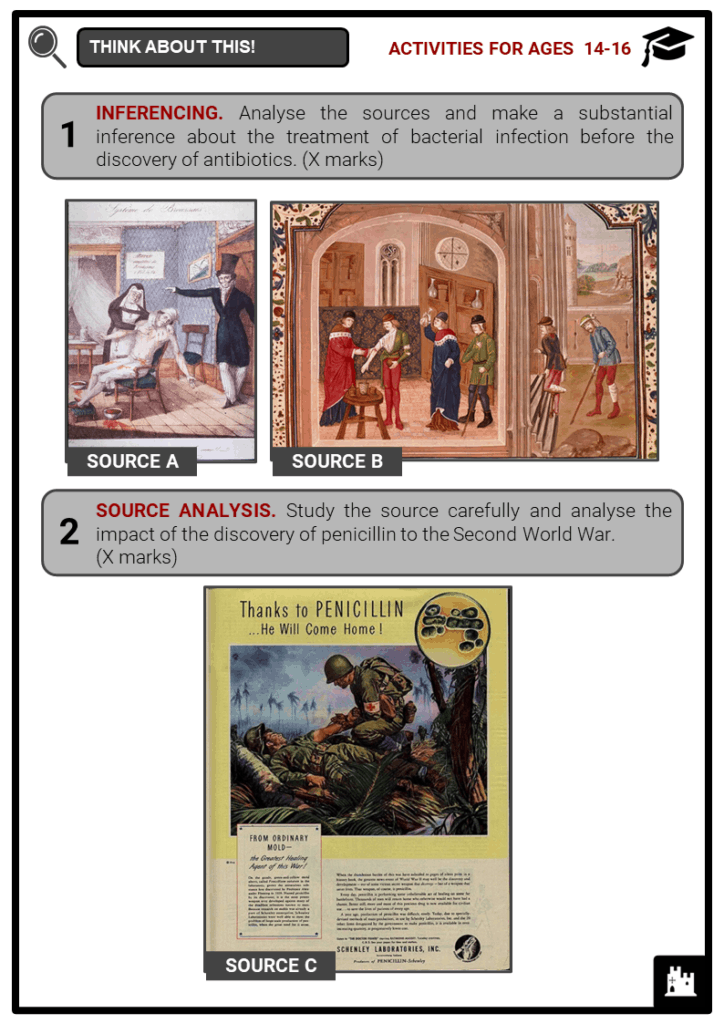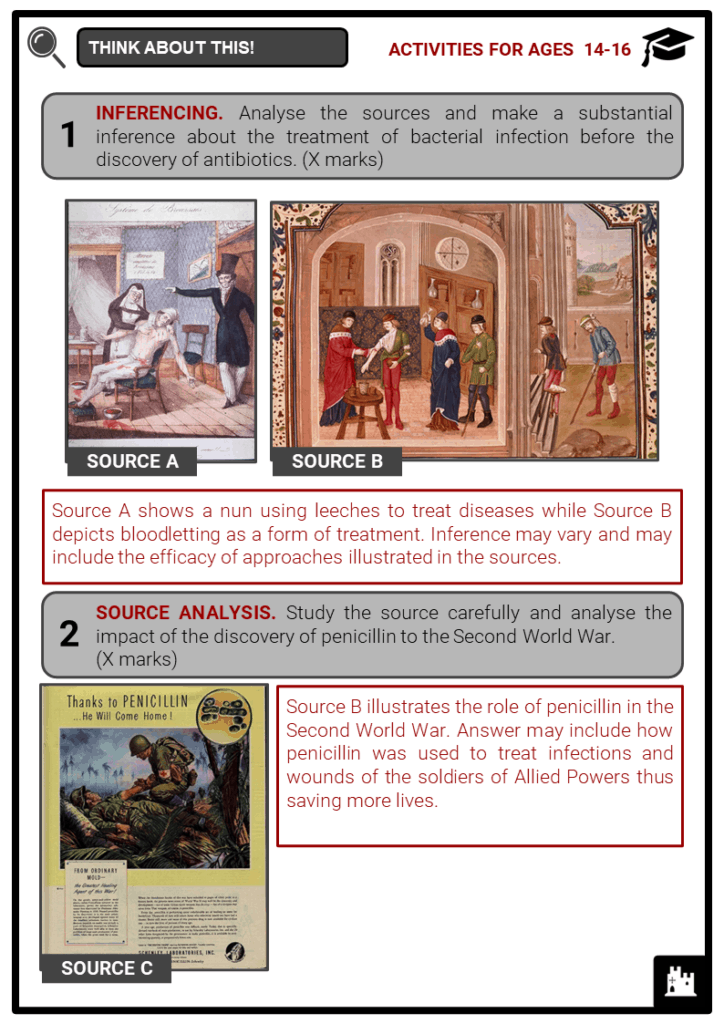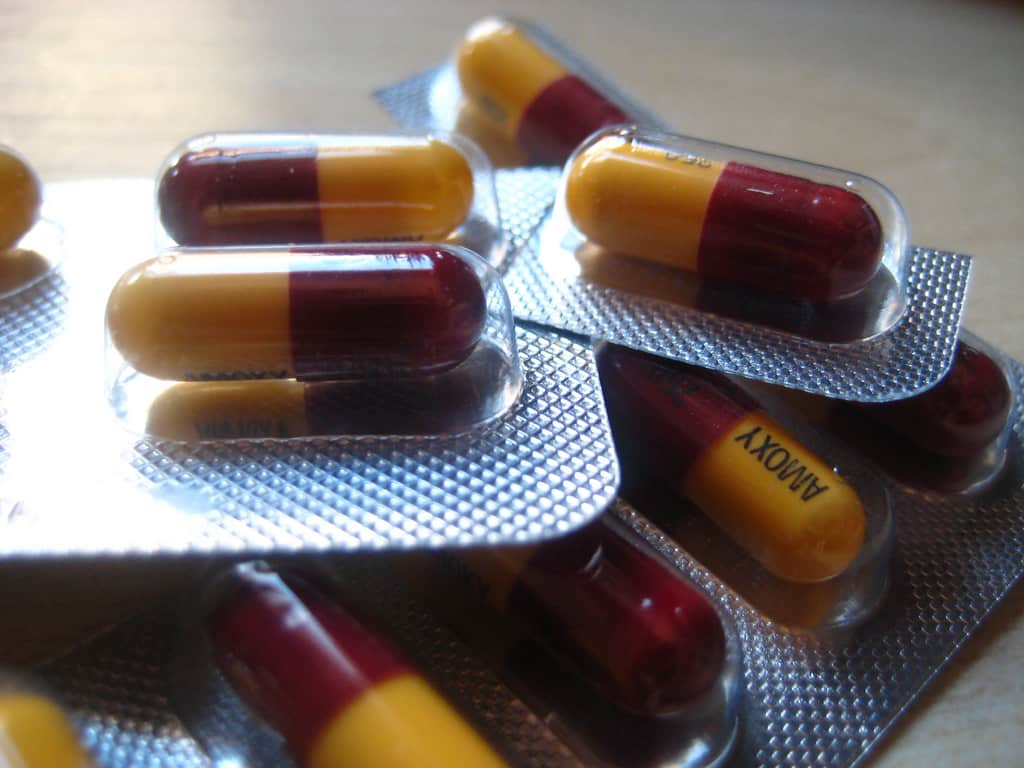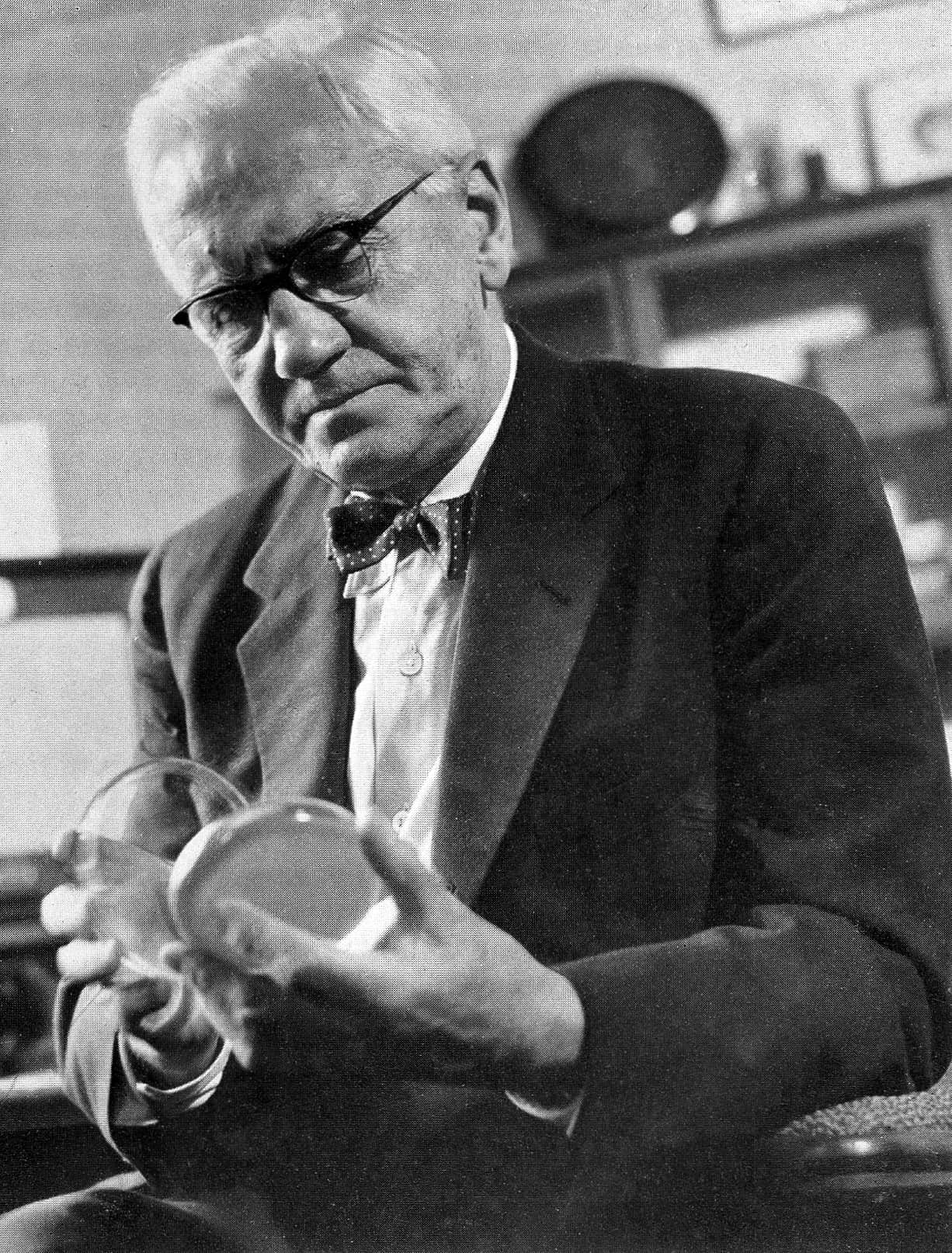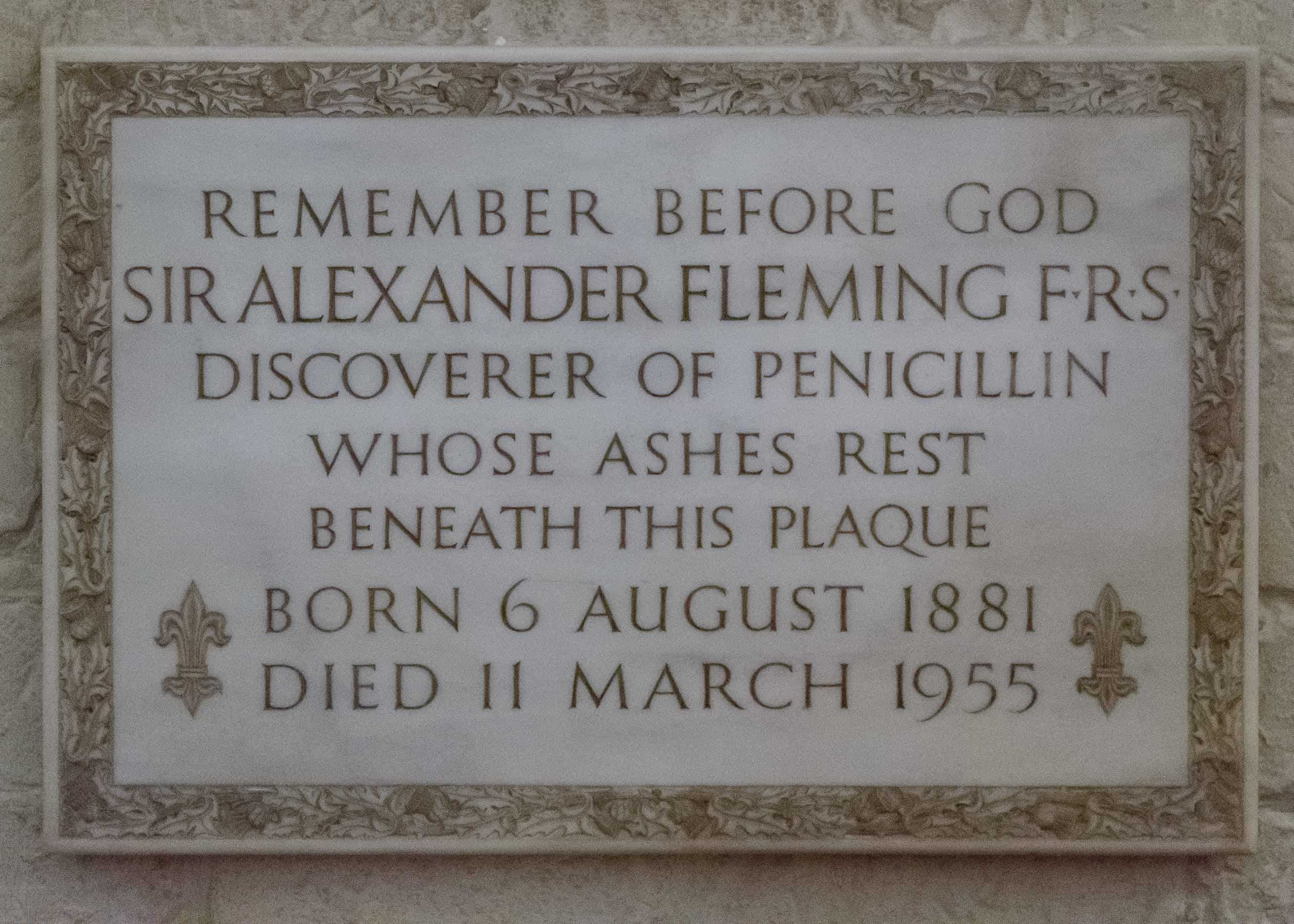Download History of Antibiotics Worksheets
Do you want to save dozens of hours in time? Get your evenings and weekends back? Be able to teach History of Antibiotics to your students?
Our worksheet bundle includes a fact file and printable worksheets and student activities. Perfect for both the classroom and homeschooling!
Table of Contents
Add a header to begin generating the table of contents
Summary
- Early discovery of antibiotics
- Development of antibiotics for clinical utility
- Discoveries of new antibiotics
- Discoverer of penicillin’s antibiotic effects: Sir Alexander Fleming
- Influence of antibiotics
Key Facts And Information
Let’s know more about History of Antibiotics!
- Antibiotics are chemical substances, produced by microorganisms, which have the capacity, in dilute solutions, to inhibit the growth of and even destroy bacteria and other microorganisms. In 1928, the British bacteriologist Sir Alexander Fleming was the first to discover the antibiotic property of penicillin: a discovery that opened the door for the therapeutic possibilities of antibiotics.
- A decade later, Sir Howard Florey and Ernst Chain succeeded in developing penicillin as a therapeutic drug, which earned them a Nobel Prize in Medicine together with Fleming. Various antibiotics, including penicillin and streptomycin, have been widely used to treat infections since 1942, proving their significance in revolutionising medical practices.
Early discovery of antibiotics
- Many ancient cultures used specific mould and plant materials to treat infections. Extracts of lichens have been used from early times in folk medicine as a dressing for wounds and in treating tuberculosis.
- The first antibiotic substances were isolated without recognition of their growth-inhibiting properties.
- The blue pigment pyocyanin, produced by bacteria of the genus Pseudomonas, was obtained in crystalline form by Mathurin-Joseph Fordos and his description of its physical properties was published in 1860.
- However, its antibiotic property was not discovered until many years later.
- In 1896, the French medical student Ernest Duchesne submitted a dissertation about his discovery of the antibiotic properties of Penicillium.
- He proposed that bacteria and moulds engage in a vital competition for survival but failed to report a connection between the fungus and a substance that had antibacterial properties.
- In 1907, German chemist Alfred Bertheim and Paul Ehrlich discovered arsenic-derived synthetic antibiotics. They performed experiments with various chemicals derived from dyes.
- This discovery of synthetic antibiotics marked the beginning of the era of antibacterial treatment.
- Whilst the early compounds developed were too toxic, Ehrlich and Sahachiro Hata, a Japanese bacteriologist were successful with their 606th compound.
- This discovery was announced in 1910, calling the compound 606 a drug to treat syphilis.
- Over the years, there was gradual recognition that antibiosis has a chemical basis and that the antagonistic response is due to the production of specific chemical compounds.
- In 1928, Sir Alexander Fleming discovered penicillin as a result of observing the antagonistic action in mixed cultures of Penicillium notatum and staphylococci, and suggested certain therapeutic possibilities for penicillin.
- Plant pathologists were intrigued by this antagonistic action shown between cultures of the microorganisms which cause plant diseases and cultures of non-pathogenic soil microorganisms.
- Attempts were made to design therapeutic practices for plant diseases based on the phenomenon of antibiosis.
Development of antibiotics for clinical utility
- In 1936, an antibiotic called gliotoxin was isolated from cultures of a mould, the presence of which in soil was known to be associated with a lessening of the damping-off disease of plant seedlings. With this discovery, the significance of the antibiotic as a disease preventative was established.
- One of the first investigators to deliberately search for an antibiotic was René Dubos.
- Dubos and his co-workers designed experiments which led to the discovery of antibiotics produced by certain soil bacteria, their isolation in a purified state, and their application in therapy of human diseases.
- He reported the discovery of the first naturally derived antibiotic, tyrothricin, a compound of 20% gramicidin and 80% tyrocidine, from Bacillus brevis.
- It became one of the first commercially manufactured antibiotics, which was very effective in treating wounds and ulcers during the Second World War.
- Gramicidin could not be used systemically because of toxicity whilst tyrocidine also proved too toxic for systemic usage.
- Research results obtained during this period were not shared between the Axis and the Allied powers during the Second World War, and access was limited during the Cold War.
- Dubos’ success in 1939 in finding tyrothricin gave impetus to other scientists, who found antibiotics of even greater clinical potential.
- In 1942, Howard Florey, Ernst Chain and Edward Abraham at the University of Oxford reevaluated Fleming’s penicillin and realised its clinical utility as a nontoxic systemic medicine for many acute infections.
- At this time, the term antibiotic came into use for such substances. Purified penicillin displayed potent antibacterial activity against a wide range of bacteria and had low toxicity in humans.
- Additionally, its activity was not inhibited by biological constituents such as pus, unlike the synthetic sulfonamides.
- The development of penicillin inspired the search for antibiotic compounds with similar efficacy and safety.
- Chain and Florey shared the 1945 Nobel Prize in Medicine with Fleming for their successful development of penicillin.
- The term antibiotic means "opposing life", which came from the Greek word ἀντι anti, "against" and βίος bios, "life.”
- The Ukrainian-American inventor and microbiologist Selman Waksman and his students at Rutgers University in New Jersey concentrated their research on the actinomycetes, and in 1944 discovered streptomycin, useful in the treatment of tuberculosis and other diseases.
- It was Waksman who coined the term antibiotic. He went on and discovered over 20 antibiotics.
Discoveries of new antibiotics
- Most of the antibiotic classes we use as medicines today were discovered and introduced to the market during the golden era of antibiotics from 1940-1962.
- Some of the many therapeutic antibiotics which have been discovered since 1940 are: bacitracin, chloramphenicol, chlortetracycline, oxytetracycline, tetracycline, amphotericin B, carbomycin, cycloheximide, cycloserine, erythromycin, griseofulvin, ristocetin, spiramycin, vancomycin, viomycin, and so on.
- The number of new antibiotic substances introduced for medical use increased significantly during the mid-20th century.
- From 1935 to 1968, twelve new classes were developed.
- However, after this, the number of new classes dropped markedly, with only a few classes introduced since the 1980s.
- Many scientists, with a great variety of research specialities, are needed in programmes to develop methods for producing antibiotics on the scale and at the cost required to justify their use in human medicine.
- Many of the scientists responsible for the widespread success of antibiotics are associated with the research laboratories of large pharmaceutical manufacturing companies.
- Special fermentation vessels with capacities of tens of thousands of gallons have been employed for the cultivation of antibiotic-producing microorganisms in pure culture.
Discoverer of penicillin’s antibiotic effects: Sir Alexander Fleming
- Sir Alexander Fleming was a British bacteriologist who received the 1945 Nobel Prize in Medicine for his discovery of the antibiotic penicillin.
- Fleming was born in Litchfield, Scotland, on 6 August, 1881.
- At the age of thirteen, he went to live with a brother who practised medicine in London, and found employment with a shipping company.
- He did not like his job, and when an uncle left him a small legacy, he decided to use it to go to medical school.
- As he had no university diploma, he passed a special examination and entered the school of St. Mary’s Hospital.
- One of the members of the teaching staff at Saint Mary’s was Almroth Wright, the celebrated bacteriologist who ardently believed in immunisation as the key to the treatment of infectious diseases.
- In 1906, Fleming began work in Wright’s laboratory. Fleming, however, thought there might be some other methods of treating such diseases besides immunisation.
- During World War I, he served in France as an army doctor under Wright. The question was no longer one of immunisation.
- Wounded men died of septicaemia, tetanus and gangrene. To prevent this, surgeons relied on antiseptics.
- Fleming made a careful study of the infected wounds and demonstrated by remarkable experiments that antiseptics were powerless and even dangerous because they hurt the body cells as much as microbes.
- From that time on he was consumed with a desire to discover what he called a ‘magic bullet’, which would be fatal in its effects upon the microbes and inoffensive to the human body.
- In 1922, Fleming made his first discovery.
- He proved that nasal mucus, tears, other secretions, and even tissues contain a substance which can dissolve certain microbes with surprising speed.
- Wright gave the miraculous substance the name of ‘lysozyme’ because it was an enzyme and ‘lysed’ or gradually killed microorganisms.
- The lysozyme seemed to be the body’s natural antiseptic. Unfortunately, its action was weak on the worst pathogenic microbes.
- Fleming’s ‘magic bullet’ came to him in 1928, through the open window of his laboratory in the shape of a mould which landed on a microbial colony of Staphylococcus and dissolved them.
- The mould was identified as Penicillium notatum.
- The substance discharged by the mould into the culture broth he named penicillin.
- He proved that penicillin was non-toxic to animals, even in massive doses, and that it was able to kill pathogenic microbes with a high degree of resistance.
- Unfortunately, there were no biochemists at St. Mary’s and Fleming was unable to purify the substance to use it in injections.
- Purification was achieved in 1940 by Oxford scientists, Howard Florey and Ernst Chain. In 1941, it was recognised that, in view of its potentialities, penicillin should be produced on a large scale.
- Other antibiotics were to follow, resulting in a complete revolution in the treatment of infectious diseases. A whole range of bacterial infections came within the effective control of substances produced for the most part by moulds.
- In 1944, Fleming was knighted and received the Nobel Prize in Medicine the following year.
- The Wright-Fleming Institute was created at St. Mary’s and Fleming was its first director.
- He died on 11 March, 1955, and was honoured with a burial in the crypt of Saint Paul’s Cathedral.
- As a result of his discovery, the average length of human life has been enormously increased.
Influence of antibiotics
- Antibiotics have revolutionised medical practice and have been used to treat various human and animal diseases caused by bacterial infections and sometimes protozoan infections. Many medical advances are dependent on antibiotics such as joint replacements, organ transplants, cancer therapy, and treatment of chronic diseases like diabetes, asthma and rheumatoid arthritis.
- Penicillin has found extensive application in the treatment of infections caused by staphylococci, namely osteomyelitis, supportive arthritis, bronchitis, empyema, endocarditis, furuncles, laryngotracheitis, meningitis, otitis media, peritonitis, suppurative pneumonia, burns, septicaemia, sinusitis, tonsillitis, wounds, and many others.
- Whilst penicillin is effective in the treatment of a variety of infections, it is not effective in mixed infections caused by gram-negative bacteria or in malaria, tuberculosis, virus infections, fungus diseases, and others.
- The toxic manifestations to penicillin are limited largely to conditions of allergy.
- Another antibiotic medication that has been utilised in the treatment of a variety of infections is streptomycin.
- Meningitis, endocarditis, laryngotracheitis, and urinary tract and pulmonary infections caused by Pfeiffer’s bacillus, respond favourably to treatment.
- It has been found helpful in the treatment of the ailments such as peritonitis, liver abscesses, bile duct infections and empyema due to susceptible organisms; tuberculosis; chronic lung infections due predominantly to gram-negative bacteria; endocarditis caused by penicillin-resistance.
- Among the limitations of streptomycin are a certain degree of toxicity, which may result in dizziness, deafness, or other reactions, and a rapid development of resistance to it by the infectious organism.
Image sources:
[1.] https://farm4.staticflickr.com/3175/3060243118_f22ac2d56a_b.jpg
[2.] https://upload.wikimedia.org/wikipedia/commons/2/21/Sir_Alexander_Fleming._Wellcome_L0000655.jpg


